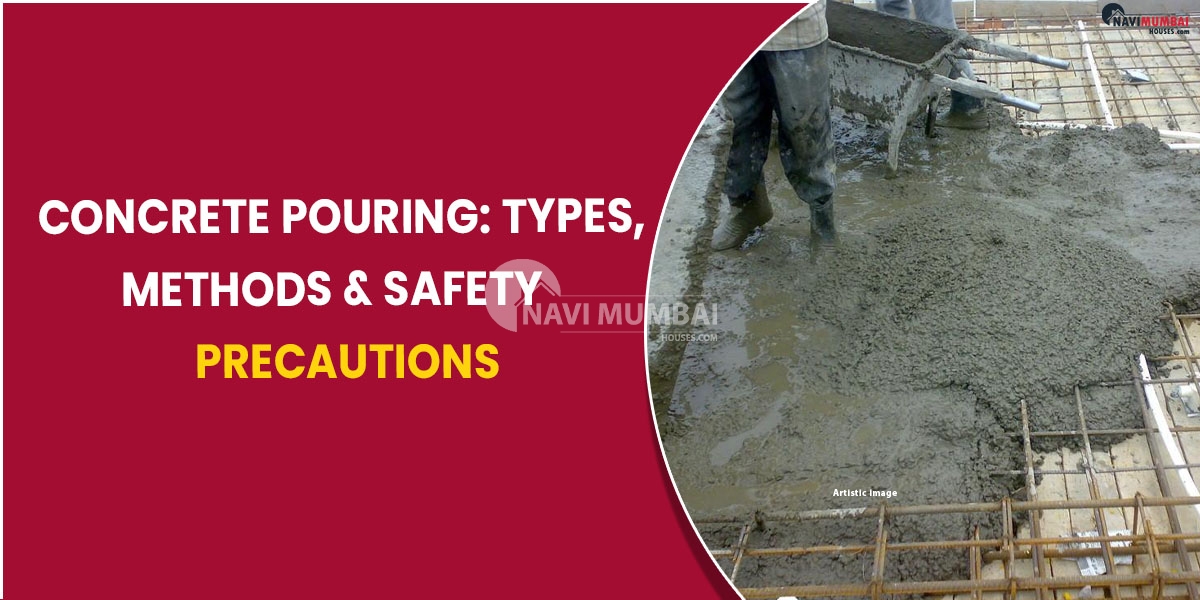
- April 29, 2023
- News
Concrete pouring: types, methods & safety precautions
Pouring concrete is a crucial step in the construction of numerous structures, including walkways, walls, floors, and foundations. The foundation for buildings and structures can be stable and long-lasting thanks to a properly poured concrete slab.
Are You Looking For 2BHK flat in kalyan?
Pouring concrete: preparing the location
It is crucial to adequately prepare the site before pouring concrete.
Clearing and preparing the space
It is essential to remove all garbage, pebbles, and other obstructions before pouring concrete.
Installing reinforcement and forms
It can also be necessary to install reinforcement before pouring the concrete. Rebar or wire mesh are examples of this, which aid in strengthening the concrete and preventing cracking.
Gathering equipment and supplies
You will need a range of tools and supplies in order to pour concrete. These tools include a level, rake, shovel, wheelbarrow, and concrete mixer.
Mixing cement
Concrete mixture types
Concrete combinations of the following sorts are among the most popular:
Regular concrete
This cement, sand, and gravel concoction is fundamental. It is appropriate for the majority of uses, including as building foundations, driveways, and sidewalks.
High-strength concrete
Lightweight concrete
Self-consolidating concrete
Proper mixing procedures
Pouring concrete: Concrete consistency and texture
Another important aspect to think about is the concrete’s consistency and texture. Texture describes how smooth or grainy the combination is, whereas consistency describes how much water is in the mixture.
Professionals disagree on the appropriate consistency of concrete, but generally speaking, a mixture with a wet, soupy feel is simpler to work with than a rigid mixture. A mix that is overly moist, however, can become problematic during the pouring and finishing processes.
Pouring concrete: safety precautions
Pouring methods
Pouring concrete: Advice for a level and smooth finish
Working fast and attentively throughout the pouring stage is vital to obtaining a smooth and level finish.
Pouring concrete: Curing and completing concrete
Importance of proper treatment
To guarantee that the concrete reaches its maximum strength and durability, proper curing is essential.
Options for finishing
There are various finishing options when the concrete has dried. To obtain a particular look or texture, these techniques can involve stamping, staining, polishing, or painting the surface.
Resolving problems with the pouring of concrete
Even when using the right procedures, issues might occasionally arise when laying concrete. Cracking, discoloration, and uneven surfaces are some of the most typical problems.
Reasons and solutions
These problems can have a variety of origins, but they frequently result from things like inadequate mixing, overworking the concrete, or short curing times. It can be essential to replace the damaged part and fix the problems it causes or to apply a surface treatment in order to conceal or resolve the issue.
Tallest Skyscraper of Shilphata | Metro Paramount | 8433959100
You’re looking for 1BHK Flat in Kalyan, we have the Best Properties In Thane. Like Ready to Move & Nearby possession:
https://navimumbaihouses.com/property/search/buy/kalyan/1BHK/
If you want daily property update details please follow us on Facebook Page / YouTube Channel / Twitter

